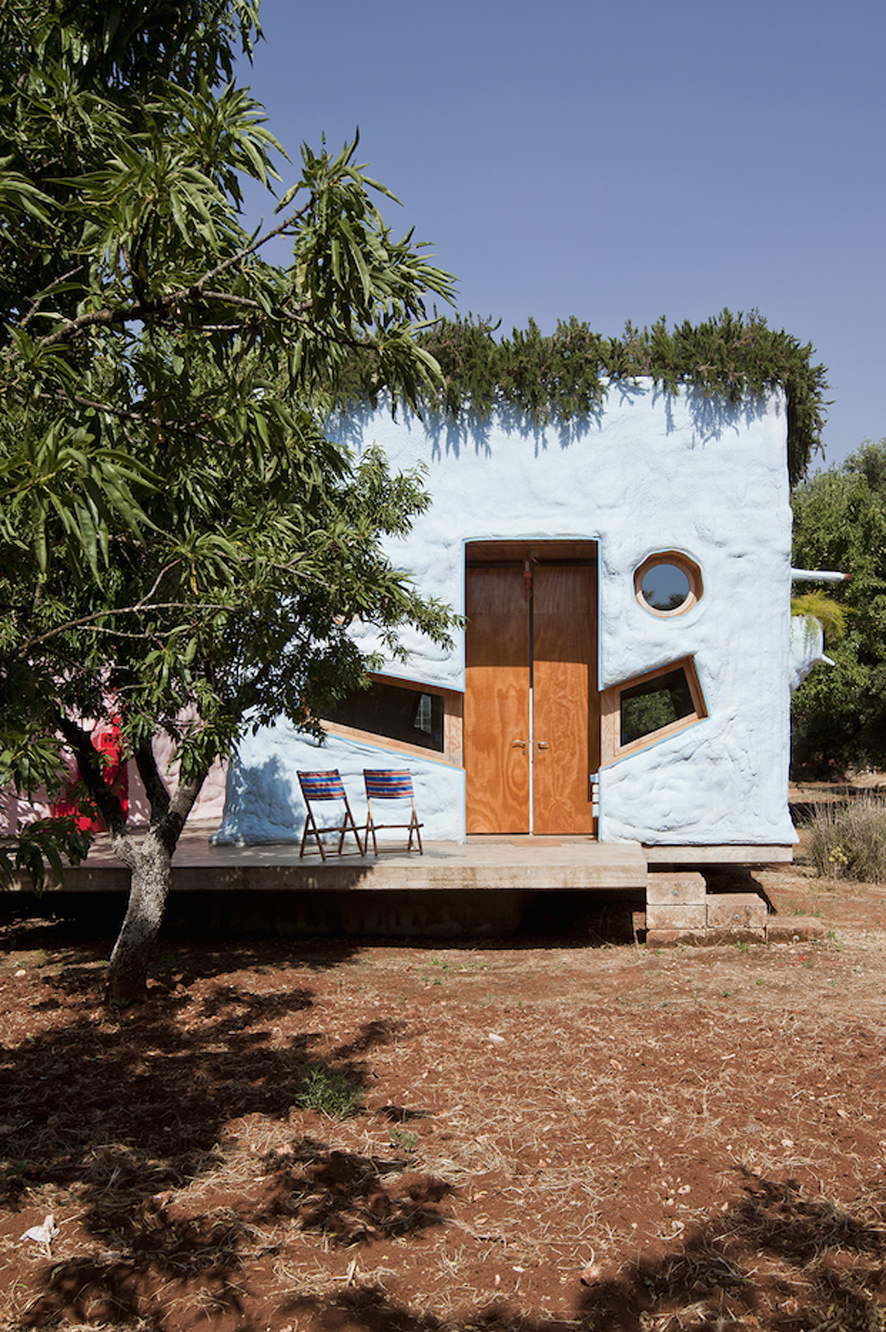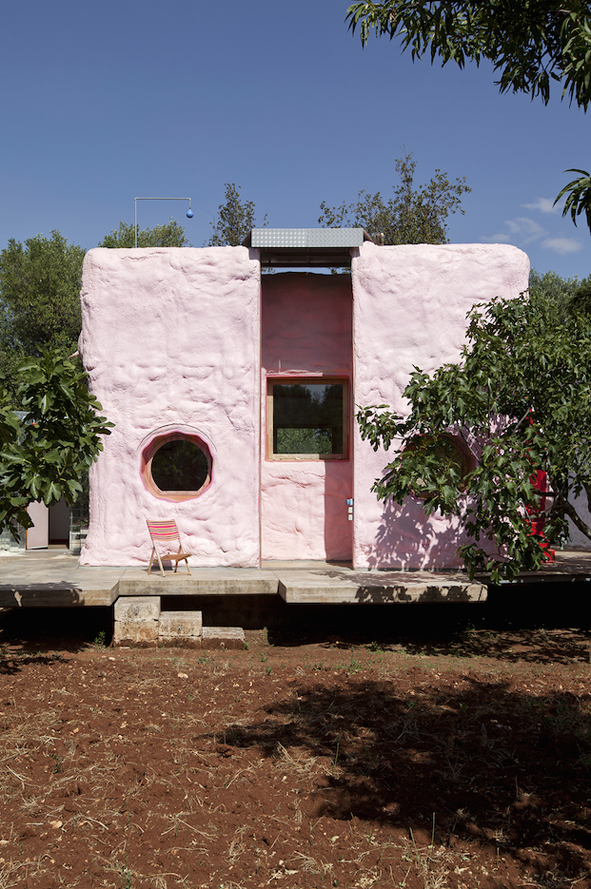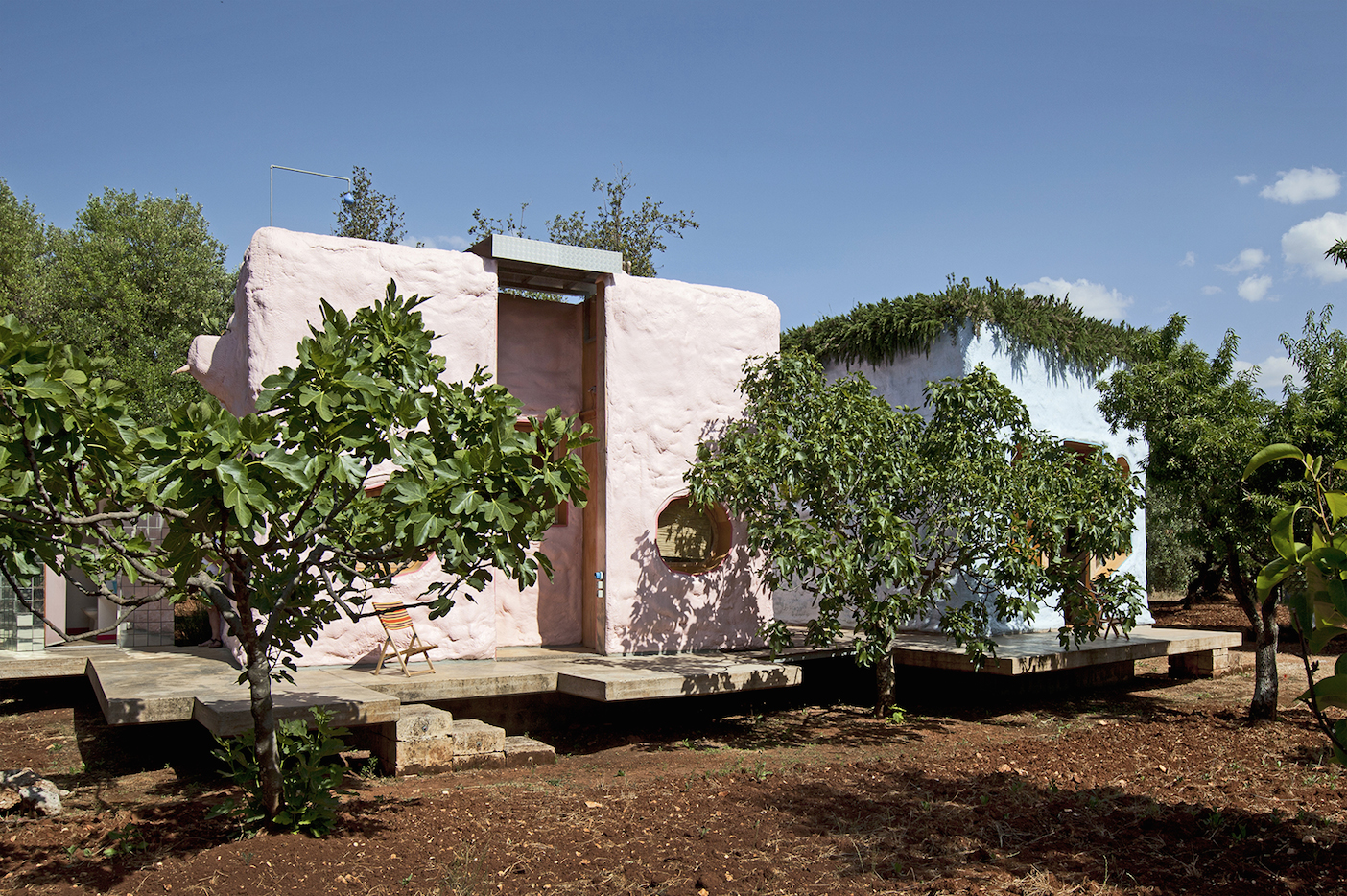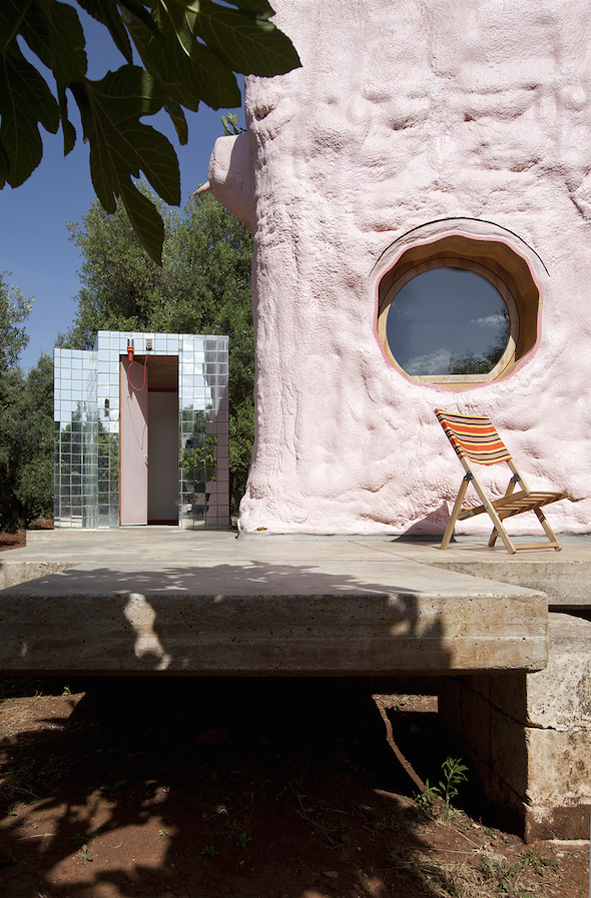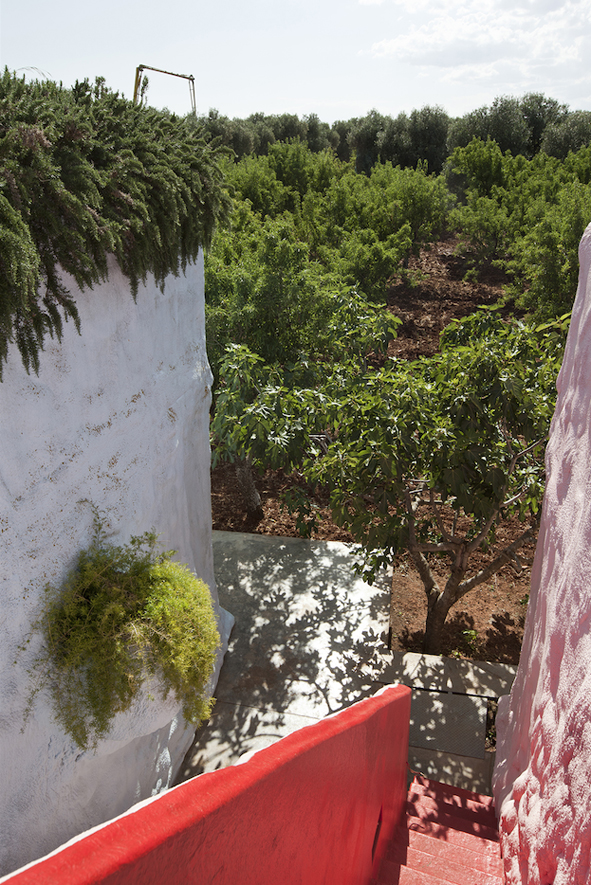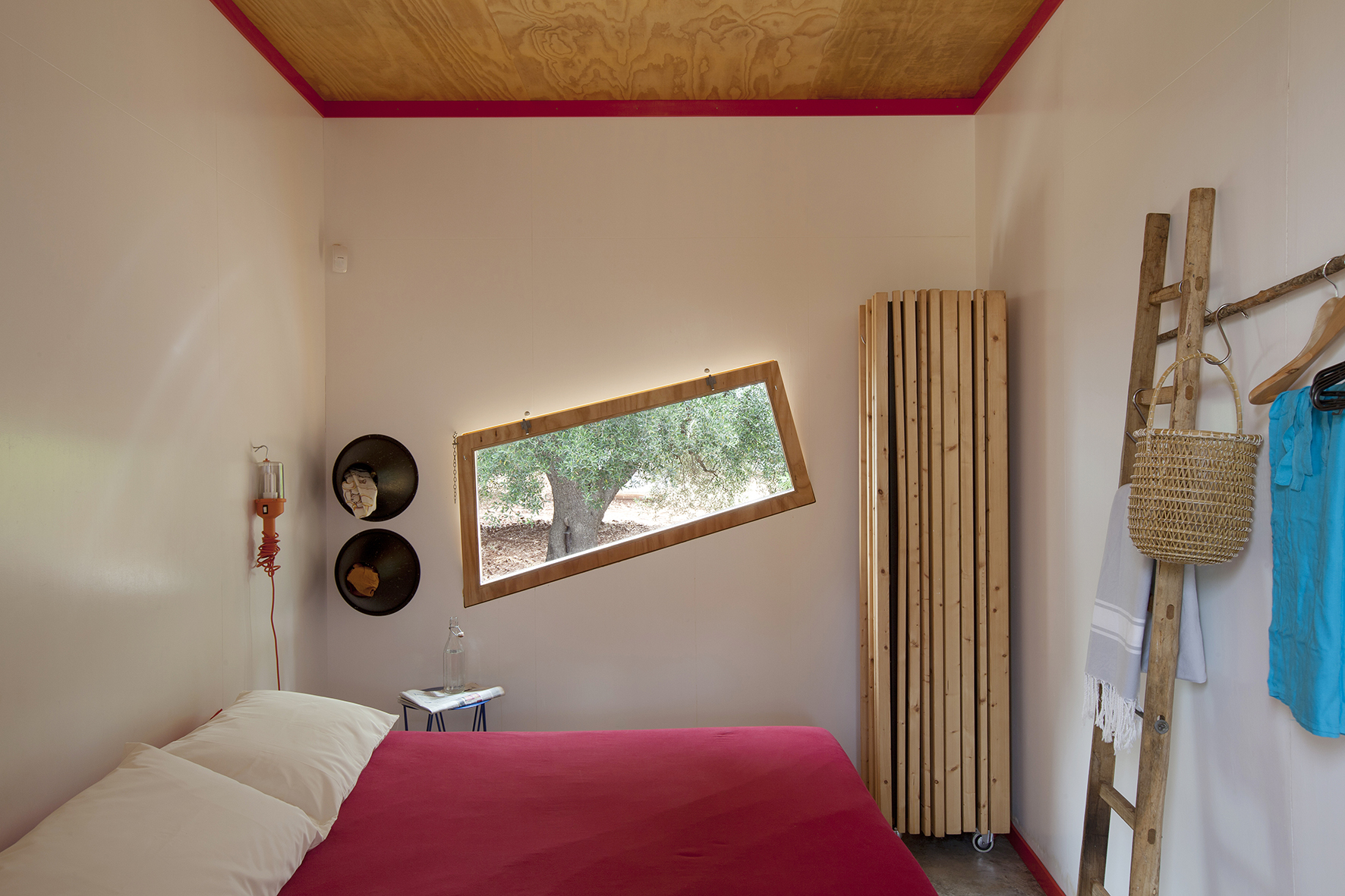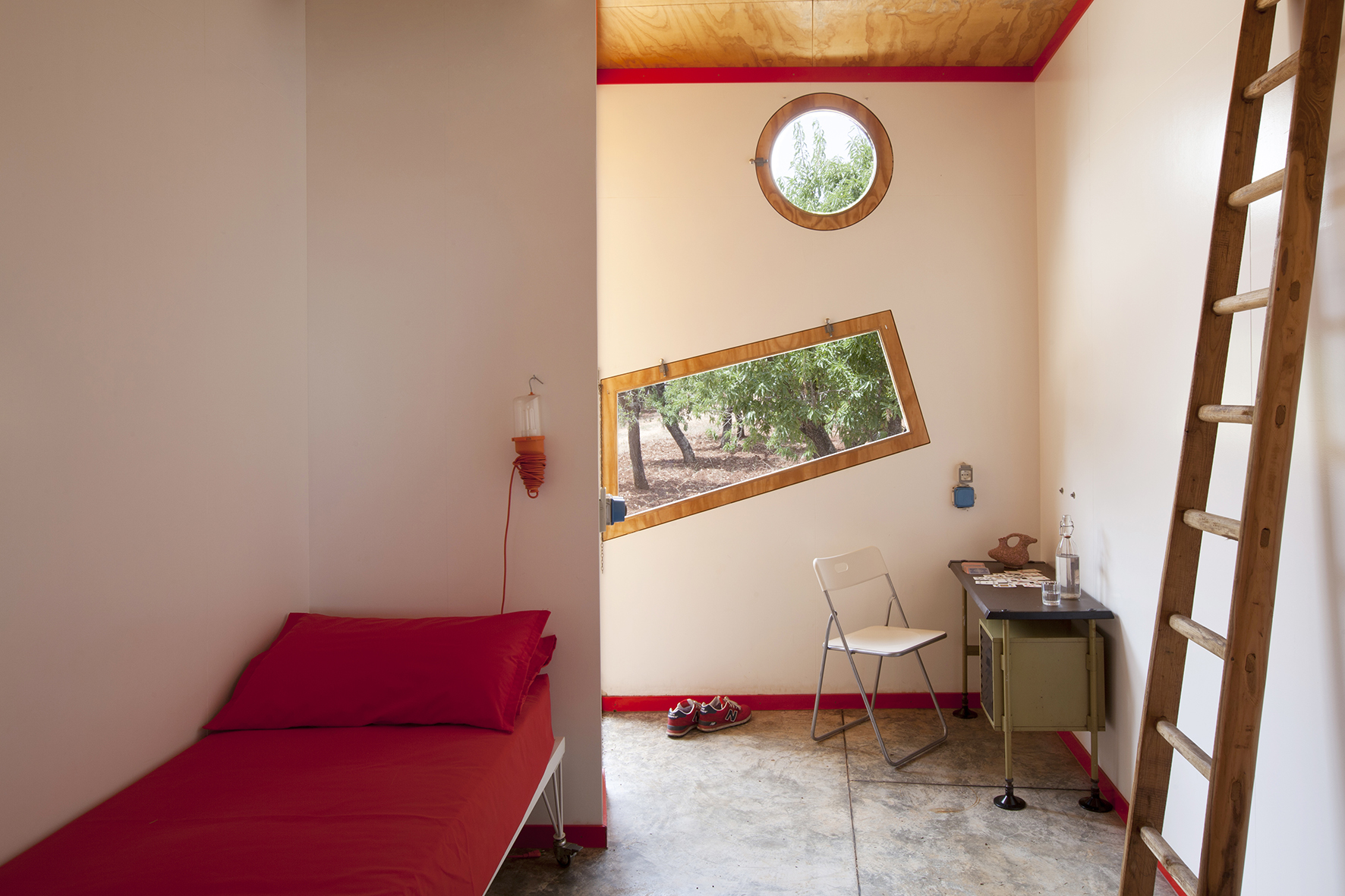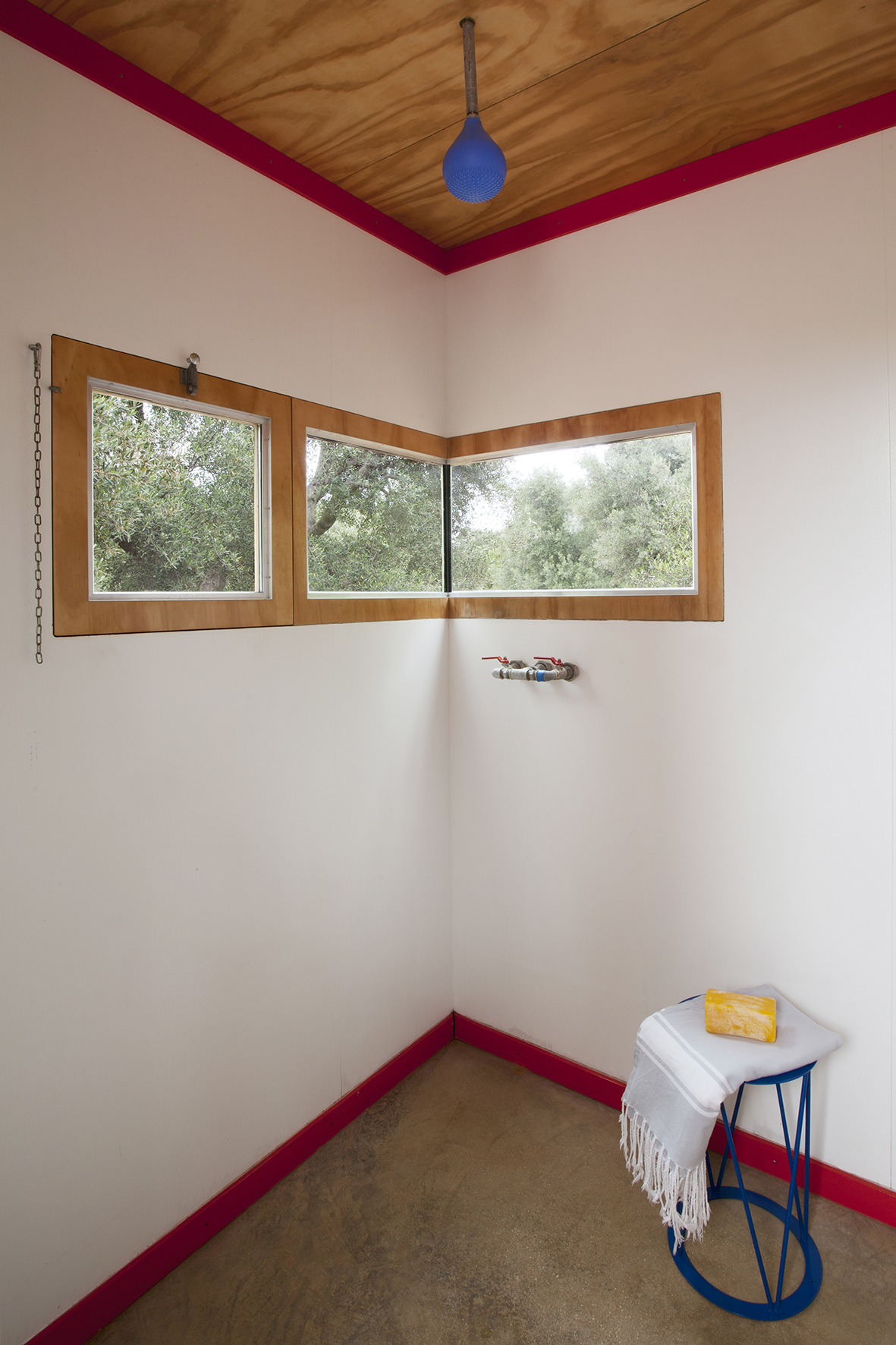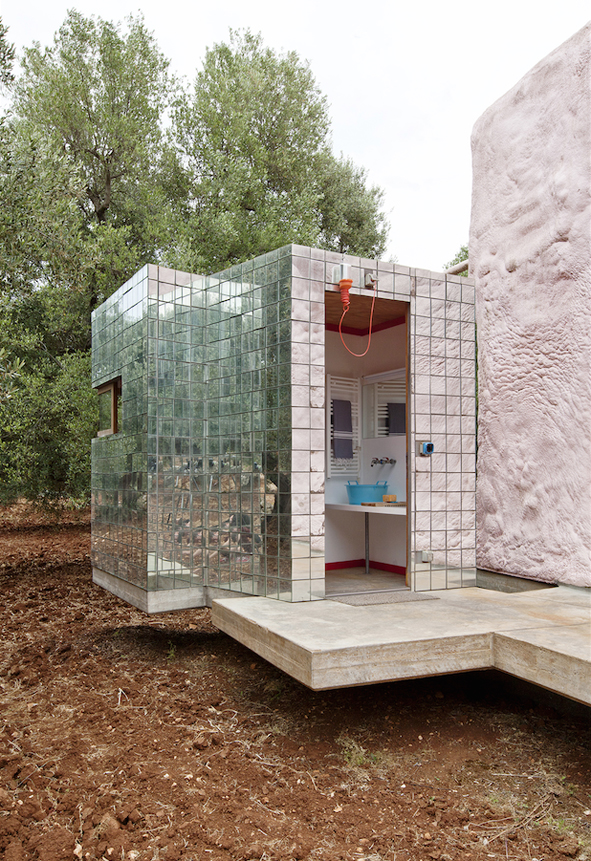Pescetrullo
Gaetano Pesce, was called upon to interpret a hectare of olive trees in Carovigno countryside, near Ostuni (BR) and built, along with Gabriele Pimpini, an architect, and with Cosimo Cardone, all of whom participated in the project and realization of the work, a contemporary piece of architecture in a context saturated in history and form as is the Italian one.
The collaboration with Gaetano Pesce, for his well known way of working in a transversally in settings, usually in foreign areas, in visual arts, in architecture and design, gave an additional value to the research done in contemporary visual arts carried out over the years by Caterina Tognon, who commissioned the work, representing her gallery Caterina Tognon Arte Contemporanea.
The size of the existing building wasn’t changed, and underwent a little light restoration, and it is now used as a container/chest for a work of art.
Around this, four new projects were realized, ‘Pescetrulli’, all put onto cement based platforms where the shape, really irregular, seems to change itself just to leave space, in its cracks, for the fig, almond and olive trees.
Gaetano Pesce made the new look like the imposing olive trees, present in great number on that land, and which take on geometrical shapes becoming almost ‘cubic’.
Research on the softness urged him then to soften the corners and above all to choose the polyurethane as his building material.
The use of polyurethane, defined versatile, which gives insulation and is eco-friendly, is also aimed to encourage the accumulation of thermal Energy by obtaining a passiveness from the point of view of Energy and allows thus, the reduction almost to zero of heat during winter and cooling during summer.
Another two parts, smaller, which work for the hygienic services, are completely covered, in an irregular way, by small mirrors measuring 15cm x 15cm, causing a triple effect by reflecting the surrounding area and by making any human shape seem invisible into natural shapes.
This architecture looks like design objects with its scale changed: what appears are ‘living boxes’, depending on what Pesce wanted to achieve in his creative production of veiled humans.
The two areas between the olive trees in Carovigno, in the heart of Puglia which stretches into the Mediterranean, ironically look like a man and a woman; they are portraits of the two people that commissioned the project; they are two big faces, full of expression.
And therefore the choice of colour was easy: blue for him and pink for her.
